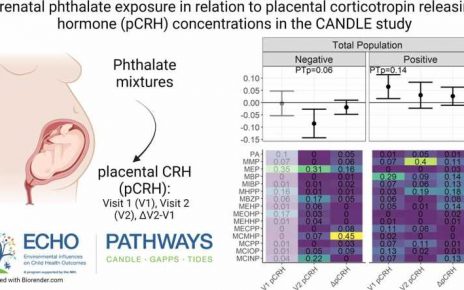Politics these days can feel like life or death. A new study shows that, at least in one respect, that’s true: Americans living in counties that primarily vote Democratic are dying at lower rates than their counterparts in Republican-voting counties.
The study, out Tuesday in the BMJ, found that the mortality rate in counties that voted for Democratic candidates for president decreased by 22% between 2001 and 2019 — twice the rate of reduction in counties that chose Republican candidates.
The researchers attributed the growing mortality gap to differences in rates of fatal heart disease, cancer, chronic lung disease, unintentional injuries including drug overdoses, and suicide. In Republican counties, mortality rates decreased by 11%.

Dr Haider J. Warraich
“We’ve seen how politicized health behaviors and public health have become during the pandemic, but our study frames these things in a greater historical context, where we’re essentially showing these political determinants of health have in fact been brewing for the last two decades,” said Haider J. Warraich, MD, associate physician at Brigham and Women’s Hospital, Boston, Massachusetts, who led the study.
Warraich and his colleagues overlaid county-level mortality rates with how most residents in counties voted in the four US presidential elections between 2001 and 2019, using data from the Centers for Disease Control and Prevention and the Massachusetts Institute of Technology. Over 99% of the nation’s population was accounted for in the analysis.
Although overall morality in the country fell during the study period, the gains were uneven. Mortality rates in Republican counties dropped from 867 in 2001 to 771 per 100,000 in 2019. Meanwhile, in Democratic counties, death rates fell from 850 to 664 deaths per 100,000 people in the same period.
White Republicans Treading Water
White residents in Democratic-voting counties experienced 15% lower mortality rates in 2019 than Whites in Republican counties — fivefold more than the 3% gap in 2001.
Among Whites living in Republican counties, “there really is no improvement in mortality since after about 2007,” Warraich, who also is associate director of the heart failure program at the VA Boston Healthcare System, told Medscape Medical News. “This idea that political affiliation has some sort of inevitable effects on health is actually not true at all. In fact, until 20 years ago, there was very little difference.”
Throughout the study period, Black Americans had worse mortality rates than Whites or Hispanics. Death rates for Black Americans were lower in Democratic counties in 2001 than in Republican counties. That trend continued, but the split widened. Hispanic Americans had lower mortality rates than either White or Black Americans; death rates in this group did not appear to reflect voting habits, according to the researchers.
Meanwhile, death rates between urban and rural areas differed significantly. Residents in urban counties had the lowest rates of mortality, while death rates in rural areas were highest and showed the least improvement over the 18-year span.
Warraich and his colleagues said their study had several limitations, including assigning only one political party to a county that may have exhibited more of a split. The researchers also said they did not examine counties that flipped from Blue to Red, and were therefore unable to say if such a switch had an effect on mortality outcomes.
Michael Meit, MPH, director of research and programs, Center for Rural Health Research, East Tennessee State University, Johnson City, said that perhaps the biggest shortcoming of the new study was its failure to account for socioeconomic effects on health.

Michael Meit
“There are all kinds of reasons why cardiovascular disease in rural areas may be higher, and rural areas tend to vote Republican. So, you’re going to see that correlation, and it doesn’t mean that because they’re Republicans, or because they vote Republican, they have more heart disease,” Meit said.
Meit also cautioned that county-level voting data provides an incomplete picture of how residents vote. Had the researchers instead used ZIP codes or census tracts, they might have found similar mortality rates between low-income areas across voting patterns.
“People who live in poverty have less access to healthy foods, they have less access to recreational activity, have less access to treatment, to primary care,” Meit said. “The greatest predictor of health in the United States is income and socioeconomic status, and that’s across urban and rural areas, and I think had they looked at the impact of poverty, politics would have been secondary.”
COVID-19 Mortality
Another study picks up where the BMJ study left off in 2019, but only looked at COVID-19 death rates. Researchers from the University of Maryland, College Park, found higher 2021 COVID-19 death rates in counties where 70% or more of residents voted for former President Donald Trump in 2020. The findings, published in the Journal of the American Medical Association (JAMA) Monday, crossed election patterns with laboratory-confirmed and probable COVID-19 death data from the New York Times that were collected from local health departments.
Death rates on average were higher in Republican-voting counties, where 72.9 per 100,000 more residents in these areas died compared with counties where 30% or less of residents voted for the Republican candidate in 2020.
“COVID-19 is really one of the few examples that I can think of where politics really did play into it in a way that created this disparity in outcomes based on political preference,” Meit said. “There are real consequences moving forward from sowing distrust in public health, and we could see true disparities start to grow in some of these other chronic diseases as a result of the political distrust that has been sown in our medical professions.”
The JAMA study did consider county-level socioeconomic status, healthcare resources, and other factors using various federal and state databases. The difference in mortality from COVID-19 could not be explained after adjusting for vaccination rates, urban/rural status, availability of healthcare, or unemployment, according to the researchers.

Dr Karen Joynt Maddox
Karen Joynt Maddox, MD, MPH, assistant professor of medicine at the Washington University School of Medicine, St. Louis, Missouri, said the Republican party became the party of ” ‘Don’t tell me how to be healthy.’ It cannot be partisan to say that we need people to stay healthy.”
Maddox, a coauthor of the BMJ study, who was not affiliated with the COVID-19 analysis, called for more investment in county and other local public health departments. However, she said, even those institutions came under attack during the pandemic in some parts of the country. In those instances, institutions like churches, scout troops, and other local leaders could help make sure people are seeking the treatment they need and not avoiding preventive care.
“The solution has to come from the community, and it may look different in different places,” Maddox said. “We need people to be healthy. It just can’t be political.”
BMJ. 2022;377:e069308. Abstract
Warraich reports being an advisor for Embrace Prevention Care, and receives research support from the National Heart, Lung, and Blood Institute. Maddox previously did contract work for the US Department of Health and Human Services.
Source: Read Full Article



